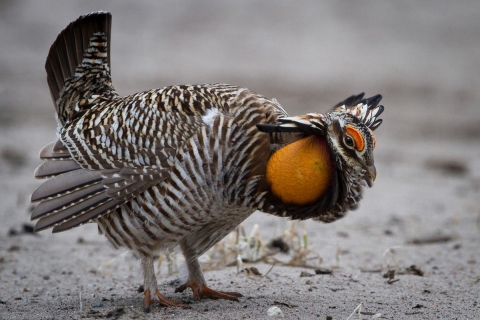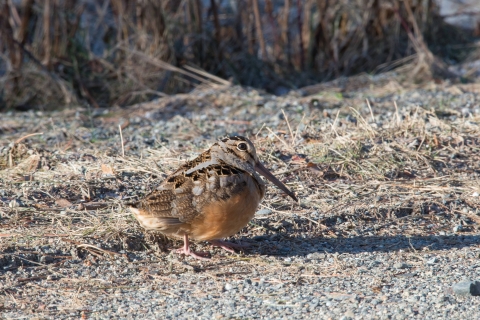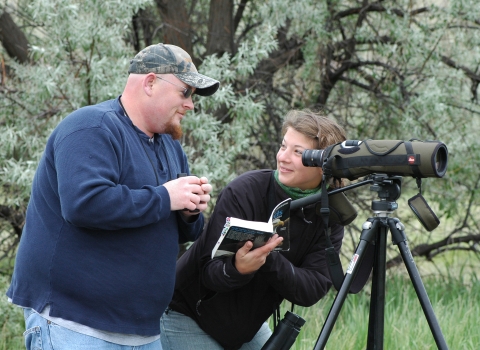As winter eases its grip, migratory birds return from southern wintering areas. National wildlife refuges provide critical habitat for ducks, geese, songbirds and shorebirds on their northward flights. Hungry and tired, migrating birds begin arriving in northern refuges as early as February and continue through May. As the air warms and the ground thaws, many other rites of spring take place in the air, on land and at sea.
Calving Season
What’s better than seeing bison? Seeing baby bison. Look for spring calves at Rocky Mountain Arsenal National Wildlife Refuge in Colorado and other western refuges.
A bison cow and calf in spring at the National Bison Range in Montana. Spring Breakup
Up north, in places like Alaska and Minnesota’s Tamarac National Wildlife Refuge, the thaw creates ice fissures, sending snowmelt downstream.
Spring ice breakup at Tamarac National Wildlife Refuge in Minnesota, Birds Galore
Great flocks stop to feed at Monte Vista National Wildlife Refuge and elsewhere en route to northern breeding grounds.
Sandhill cranes at Monte Vista National Wildlife Refuge in Colorado, site of annual Crane Fest. Ocean Drama
Gray whales migrate north along Oregon Coast Refuges in March, sometimes feeding close to shore and thrilling whale-watchers on the way.
A gray whale breaches as it migrates north along the Oregon Coast. Spring Chorus
What they lack in size, they make up in volume. Hear the cheerful din of spring peepers and wood frogs in woodlands and vernal pools.
A spring peeper at Necedah National Wildlife Refuge in Wisconsin. Go, Boomers
Attwater prairie chickens vie for mates by “booming” through inflated air sacs and dancing in areas called leks.
A prairie chicken sports an inflated orange air sac on the side of its neck. Morel Season
Edible wild mushrooms poke through the forest floor at Mingo National Wildlife Refuge in Missouri and other Midwest sites.
A morel mushroom pokes through the forest floor at Port Louisa National Wildlife Refuge in Illinois and Iowa. Sea Turtle Nesting
Sea turtles start nesting in March at Archie Carr National Wildlife Refuge in Florida and other coastal sites. Hatchlings arrive two months later.
Loggerhead sea turtle hatchlings head to sea. Woodcock Dance
In early spring, male American woodcocks woo mates with a sky dance and loud peents. They display some signature ground moves, too.
















